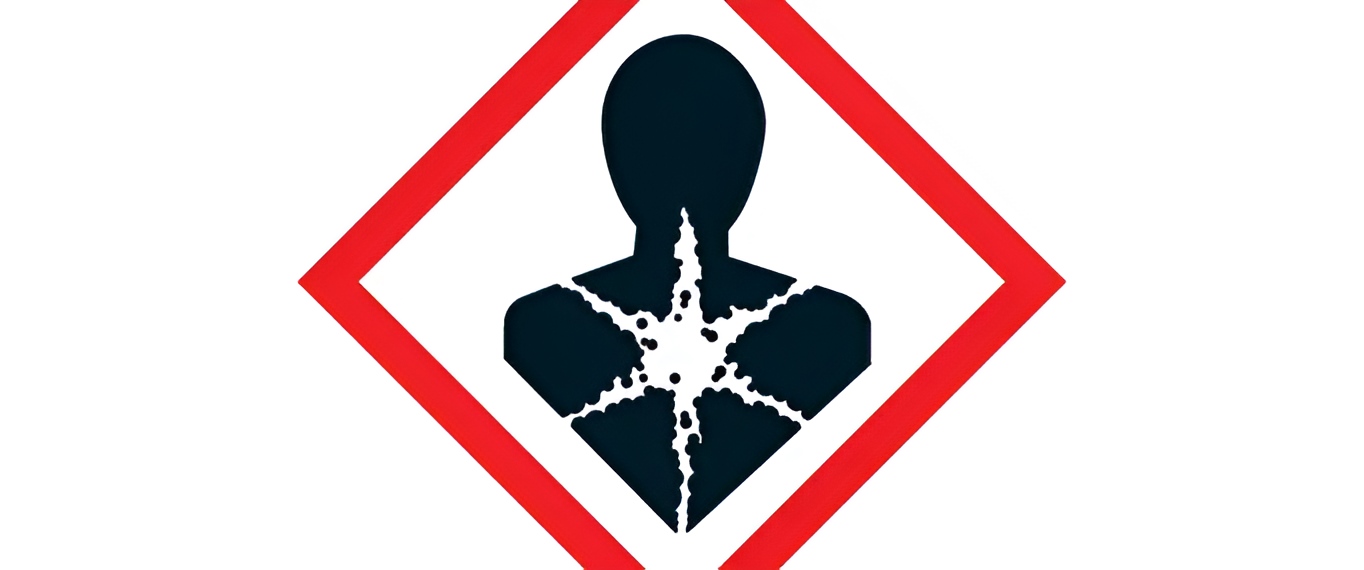The year 2013 marked a pivotal moment for the European cosmetics industry with the implementation of the new European Regulation 1223/2009. This regulation replaced the previous Directive 76/768/EEC, bringing significant updates to cosmetic legislation across the EU.
One of the most important—but often overlooked—changes introduced by this regulation was the systematic integration of Cosmetovigilance, a crucial framework for monitoring and ensuring consumer safety throughout the lifecycle of cosmetic products.
Article 23 in the above mentioned Regulation states:
“In the event of serious undesirable effects, the responsible person and distributors shall notify the competent authorities of the Member State in which serious undesirable effects have been found as soon as possible:
- any serious undesirable effects known to you or reasonably presumed to be known to you;
- the name of the cosmetic product in question, allowing its specific identification;
- any corrective action you may take. “.
With the introduction of this regulation, Cosmetovigilance was established as a centralised European system designed to provide an early warning across the EU in the event of reports of adverse effects. Under this system, the Responsible Person is required to intervene by correcting non-conformities or even withdrawing the product from the market if necessary.
This highlights the crucial role of Safety Assessments and Good Manufacturing Practices, which are also outlined in Article 8 of the regulation. In different European countries, various bodies are responsible for collecting adverse effect reports, transmitting them centrally, and implementing corrective actions. For example, in Italy, this responsibility lies with the Ministry of Health.
Cosmetics are by nature a product that must not present any health risks when placed on the market, but there are eventualities that could still give rise to serious or non-serious side effects. The most common cases of adverse events related to the use of cosmetics are allergies or irritative contact dermatitis (DIC and DAC).
Both of these adverse effects are unpredictable, but by collecting and monitoring reported adverse cases, it is possible to establish common causes that are statistically more favourable to the occurrence of adverse events, and then act accordingly.
This is one of the reasons—though not the only one, and likely not the main one—why the Scientific Committee on Consumer Safety (SCCS) periodically reviews the characteristics and scientific data available on ingredients. Repeated reports of adverse effects associated with a particular ingredient could raise concerns about its safety, suggesting that it may pose a risk.
In such cases, the ingredient may need to be restricted or, in the most serious instances, removed from the list of substances allowed in cosmetic products. For more information on the work of the SCCS, see our Guide to the Scientific Committee on Consumer Safety.
Types of Adverse Effects Caused by Cosmetic Products

What exactly is meant by adverse effects?
On the website of the Italian Ministry of Health it is clearly explained that there are 2 types of undesirable events:
- “undesirable effects (UEs)” are defined as “adverse reactions to human health attributable to the normal or reasonably foreseeable conditions of use of a cosmetic product”;
- “serious undesirable effects (SUEs)” are defined as “undesirable effects that induce temporary or permanent functional incapacity (understood as temporary or permanent physical damage that impacts the quality of life and/or makes it difficult for the consumer to carry out his or her normal occupations and/or activities, including work), disability, hospitalization (understood as hospitalization), congenital anomalies, immediate fatal risks or death”.
The person who suffers this undesirable effect is the first to determine whether the effect is severe or not, but it is still advisable to rely on the evaluation of a doctor as well.
Reporting of Adverse Reactions Caused by Cosmetic Products
In the case of Italy, as a member country of the EU, once it has been determined that an adverse event has occurred and its seriousness assessed, there is a dedicated page on the Ministry of Health’s website where forms can be filled out in the event of suspected adverse reactions caused by cosmetic products.
These forms can be submitted directly by the final consumer, or by a pharmacist, competent doctor, manufacturer, distributor, or Responsible Person. The Ministry also provides guidelines for correctly completing the form, ensuring that as much information and detail as possible is provided to facilitate the analysis of causes and effects.
The completed form, regardless of its source, must be sent to the Ministry of Health, which then issues an alert to the Competent Authorities and other Member States. As shown, cosmetovigilance is not limited to a single state or case: the adverse event is reported to the entire EU, as the Authorities must act promptly if the event is potentially serious.
It should be noted that the Responsible Person and Distributor are required to report only serious undesirable effects. However, within Italian territory, end users (consumers or professionals who use cosmetics in the course of their work) and health professionals (doctors, pharmacists) can report both undesirable effects and serious undesirable effects. Additionally, the Responsible Persons must also notify any corrective measures taken to address the serious undesirable effect.
The Assessment of the Causal Link
To understand whether the serious undesirable effect is really attributable to the use of the cosmetic product, it is necessary to proceed with the Causality Assessment, as set out in the Commission’s guidelines.
This assessment not only serves to establish a cause-and-effect link that will then help to put in place enforcement measures, but it is also necessary to prevent any abuse in reporting, which would ultimately harm cosmetics manufacturers and create unnecessary and dangerous false alarms for the consumer.
The Causality Assessment must determine whether the undesirable effect is actually attributable to the cosmetic product, and must be carried out by a professional. It does not provide estimates of the risk to the general population, and does not imply direct responsibility on the part of the manufacturing company for the serious undesirable effect and its consequences.
To facilitate the implementation of the Cosmetovigilance provisions, guidelines have been prepared to define a method for the assessment of the causal link that is standardised, reproducible, harmonised, and rational – in other words, objective.
It must be able to ascertain the cause-and-effect relationship between cosmetic products and clinical effects, and is based on two criteria:
- chronological criterion (evaluation of the temporal sequence between the use of the cosmetic and the occurrence of the presumed undesirable effect;
- semiological criterion (evaluation of symptoms, clinical examinations, exposure to the product).
The Chronological Ranking of the Causal Nexus
The chronological ranking makes it possible to assess whether the link is:
- compatible, i.e. if it is plausible given the symptoms reported;
- only partially compatible, i.e. unusual considering the symptoms reported;
- unknown;
- incompatible, if the clinical or paraclinical effect occurs before the use of the cosmetic product or if the period prior to the onset of the observed symptoms appears too short.
If the timeline is inconsistent, the undesirable effect cannot be attributed to the cosmetic – if an effect is reported two weeks after exposure to the cosmetic, it is evident that there cannot be a chronological link.
The Semiological Ranking of the Causality Nexus
The semiological ranking is calculated on the basis of information on the nature of the undesirable effect and on the results of any additional specific examinations performed or re-exposure to the cosmetic product. The following are examined:
- Symptomatology: all the symptoms that have occurred during the investigation of the case are recorded as exhaustively as possible; the symptoms must be appropriate to the nature of the product and how it has been used, in other words I cannot record knee pain as a symptom following the use of a toothpaste!
- additional examinations: they must be carried out by a specialist and must be reliable and specific to the observed effect;
- Re-exposure to the cosmetic product: It is assessed whether the effects reoccur and with what intensity upon a new intentional or accidental exposure to the product. For the exposure to be considered reliable, it must occur under the same conditions of use as the first instance.
The evaluation of the chronological and semiological ranking allows the construction of the decision-making table that guides the specialist investigating the case to give five levels of randomness:
- Very likely
- Probable
- Not clearly attributable
- Improbable
- Excluded
The Actions to Be Taken
Once the correlation between exposure to the cosmetic product and the side effect has been established, the information obtained must be used to carry out a series of actions.
Actions of the Responsible Person

According to the aforementioned Regulation 1233/2009, the Responsible Person must always be kept up to date on the undesirable effects of their product. Their primary task is to take action to address the occurrence of undesirable effects and apply corrective measures.
The manufacturer of the investigated product, once a link to a serious side effect has been established, analyses the data (intensity, duration, frequency of the side effect), reports it in the Product Information File (PIF), and makes this information easily accessible to the public.
Based on this data, the manufacturer will decide whether to modify the product formula, extend warnings and usage methods, or even independently recall the product and prohibit its sale, without being obligated by the Competent Authorities.
Actions of the Competent Authorities
The Competent Authorities must also use the information collected to take a series of actions aimed at counteracting the occurrence of serious side effects caused by cosmetics or reducing the extent of their consequences. Once the report form has been received and its reliability, completeness, and causality have been established, the seriousness of the adverse effect should be assessed.
Any other reports on the same product should be investigated, and the reports of serious side effects received should be archived and forwarded to other Member States. The archiving allows the consultation of the reports by the EU Scientific Body, which will use this information to evaluate ingredients that may raise concerns about consumer safety.
The Competent Authorities may even order the withdrawal of the product from the market if there are serious risks to human health. Read more about how EU & UK authorities inspections work.
Rapid Alert System for Non-Food Consumer Products (RAPEX)

The Rapid Alert System for non-food consumer products (RAPEX) platform also deserves a mention. This tool has existed since before the entry into force of Regulation 1223/2009 and is still used to quickly report in all EU Member States products (not only cosmetics but excluding drugs, food, and medical devices) that could present risks to human health. This enables measures to be taken promptly to address the risks, such as product withdrawal.
RAPEX can be used in the context of Cosmetovigilance as a tool in the most serious cases of possible harm to consumer health, allowing for swift intervention. However, it is important to note that the procedures outlined in the article must still be followed as legal obligations, even when RAPEX is used.
The Importance of Cosmetovigilance
Cosmetovigilance in cosmetics regulations is a process often underestimated but essential for ensuring that cosmetic products are truly safe for their entire period of use, fully protecting the consumer’s health. This is the essence of the philosophy behind Regulation 1223/2009: consumer safety.
The protection of end consumer health is central to every aspect, from formulation to ingredient analysis, production control, raw material toxicity studies, testing, and ongoing market surveillance. Consumer protection does not end once the finished cosmetic is placed on the market; it continues throughout the life of the product, even and especially when the cosmetic is in use by the consumer.
In this respect, cosmetics are very similar to pharmaceuticals, and the Cosmetovigilance system borrows its structure from the pharmaceutical world. Although cosmetics do not have healing properties, they are still involved in the health and well-being of the individual and, as such, must be subject to vigilance, particularly during their use.
Do you still have any doubts about how Cosmetovigilance works? Contact us, and we’ll help you make your product and its vigilance process compliant.



